When you think of bacterial wars, you probably think of bows and arrows and sticks and nano weapons. But what if I told you that bacteria fight each other with bubbles?
Yes, bubbles!
No, bacteria don’t just produce bubbles and try to hit another microbe with them. They are more sneaky. Bacteria fill these bubbles with antibiotics. And antibiotics are toxic and kill microbes.
So, when these toxic bubbles hit other bacteria, they will suffer.
Let’s look at where these bubbles come from and why bacteria decide to fill them with antibiotics.
Bacteria and their membrane(s)
Bacteria come in one of two kinds. They can have one or two cell membranes.
If a bacterium has one cell membrane, it is called Gram-positive. If it has two cell membranes, an inner and an outer membrane, it belongs to the Gram-negative bacteria.
The outer and inner membranes of Gram-negative bacteria are slightly different. Interestingly, the inner membrane of Gram-negative bacteria is the same as the cell membrane of Gram-positive bacteria. But in Gram-positive bacteria, that membrane has a lot of additional stuff to make it thicker.
Because Gram-negative bacteria have two membranes, their outer membranes can form “blebs”. These blebs, also called vesicles, eventually form round spheres – or bubbles – and detach from the membrane which is how they are released into the environment.
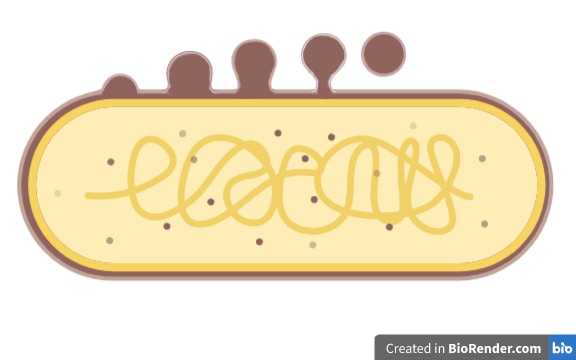
Bacteria and their outer membrane bubbles
As you can see, these bubbles are made from the outer membrane of Gram-negative bacteria. This is why they are called outer membrane vesicles. These are basically a double layer of lipids in the form of a sphere with stuff inside.
Within these bubbles, bacteria pack anything that they want to get rid of. This can be cell junk and can come from cell machines that don’t work anymore. Bacteria can get rid of that stuff by throwing it out.
About Chromobacterium violaceum
One bacterium that produces these outer membrane vesicles is Chromobacterium violaceum. And this one has a special reason to produce bubbles: it uses them to kill other bacteria.
Chromobacterium violaceum produces the antibiotic violacein. Violacein is a purple molecule and turns Chromobacterium colonies into purple dots.
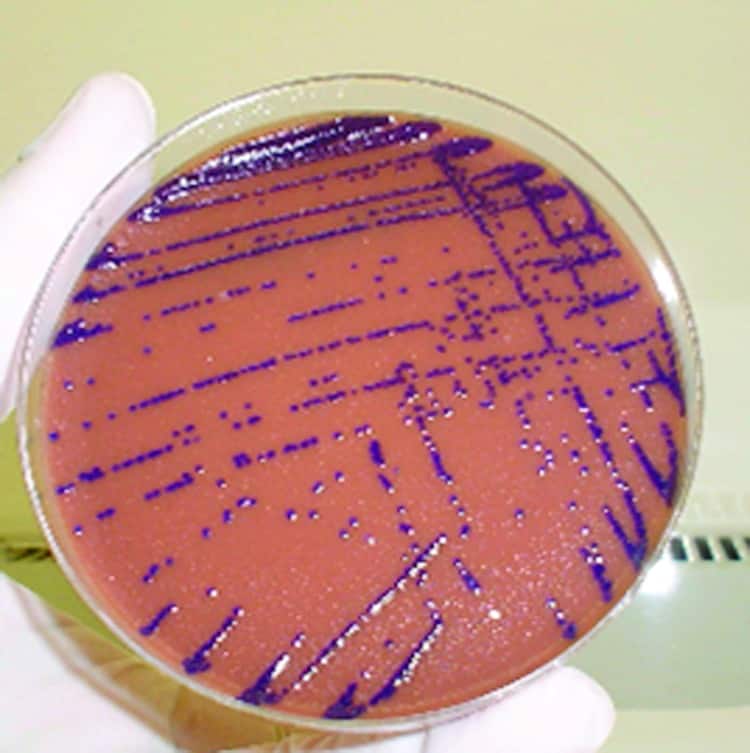
Since violacein is an antibiotic, it kills other bacteria. However, this antibiotic only kills Gram-positive bacteria, those with only one cell membrane.
The problem with violacein is, that it is a very hydrophobic molecule. This means that it is insoluble in water. Hence, researchers were interested to find out how Chromobacterium transports violacein through water to other bacteria.
Chromobacterium violaceum bacteria produce toxic bubbles
So, researchers had a look at Chromobacterium cells. They saw that these bacteria produce bubbles from their outer membrane. And they do indeed look like spikey bubbles as in the picture below.
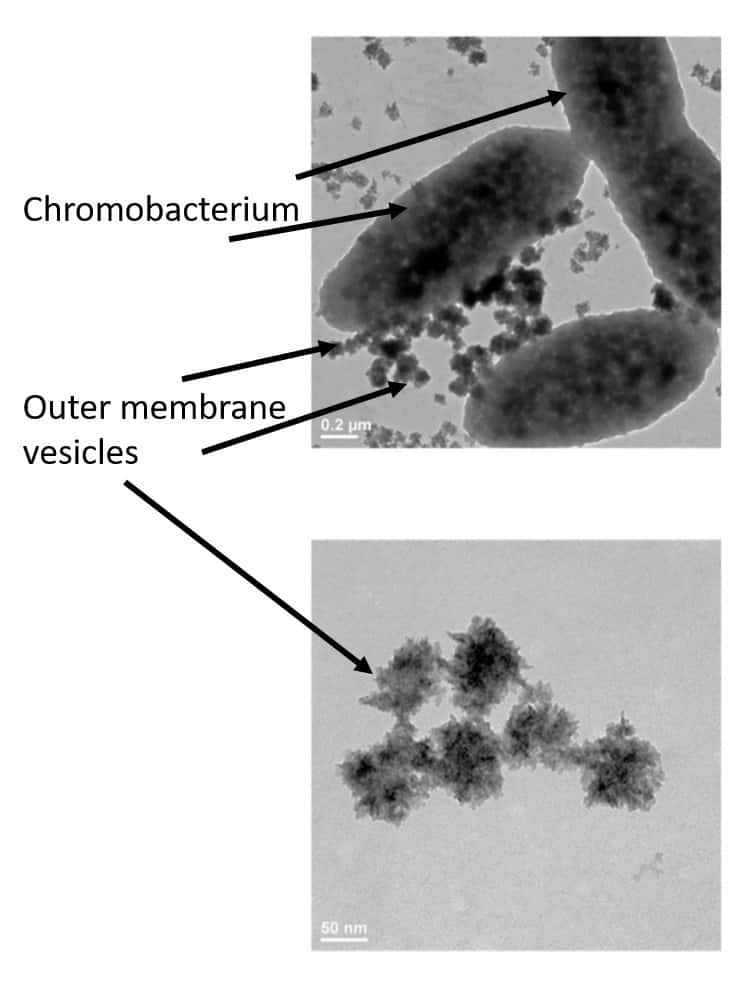
The researchers then purified the vesicles and added them to Staphylococcus aureus, a Gram-positive bacterium. The vesicles killed Staphylococcus aureus, hence the researchers thought that the violacein would be inside these vesicles.
Then they grew a Chromobacterium mutant that did not produce any violacein. But this mutant still produced outer membrane vesicles. Surprisingly, the vesicles from this mutant did not kill Staphylococcus aureus.
From this, the researchers concluded that Chromobacterium transports the violacein within the bubbles.
This meant that the researchers found new functions for outer membrane vesicles. Hence, bacteria use them
a) to solubilise a hydrophobic molecule
b) to transport a hydrophobic and toxic molecule towards other bacteria
c) as bacterial weapons
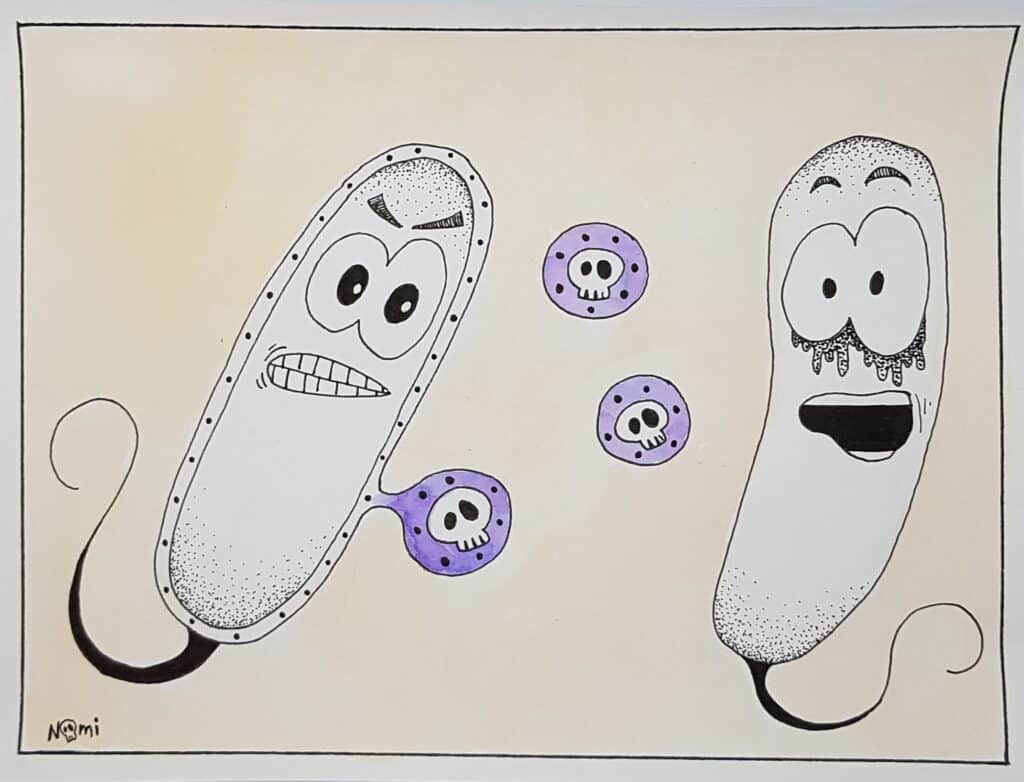
Now, this concept gives researchers interesting possibilities to apply outer membrane vesicles.
Maybe, one day we will find a way to fill these bubbles with therapeutic molecules and send them towards tumour cells or we just found a new way to deliver antimicrobial substances in general.
For sure, scientists will come up with some cool new ideas to use outer membrane vesicles in the clinic, but as always, that requires a lot more research ?

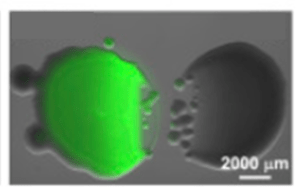
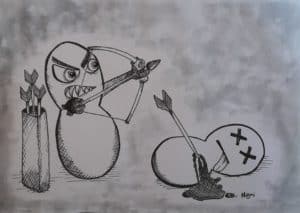
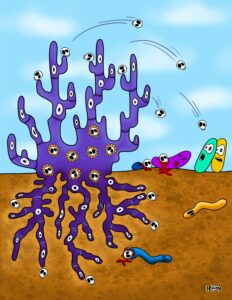
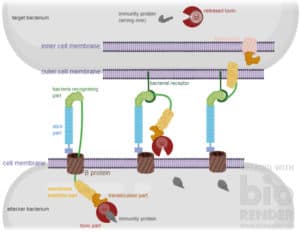
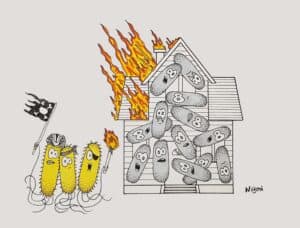
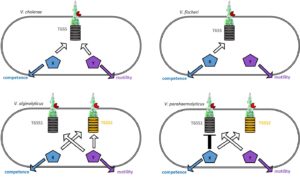

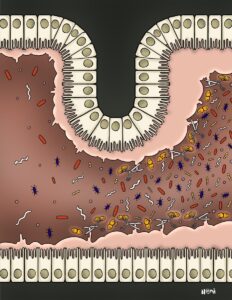

One Response
thanks for shairing this post